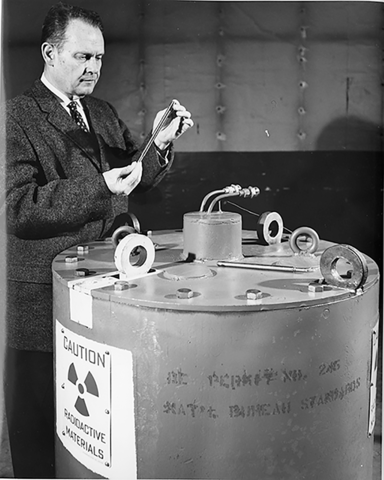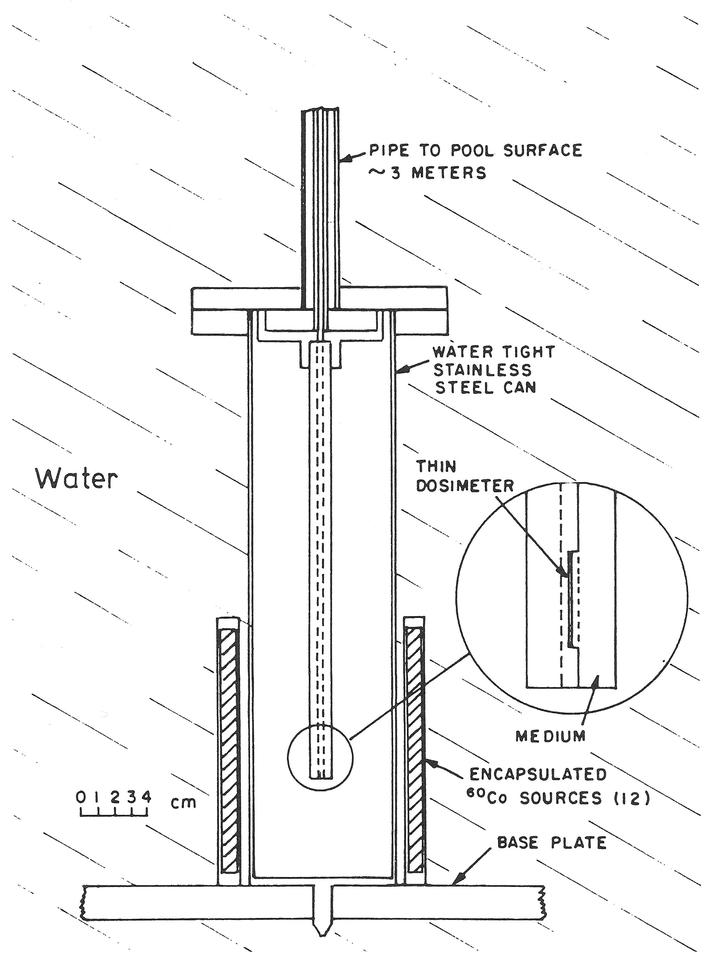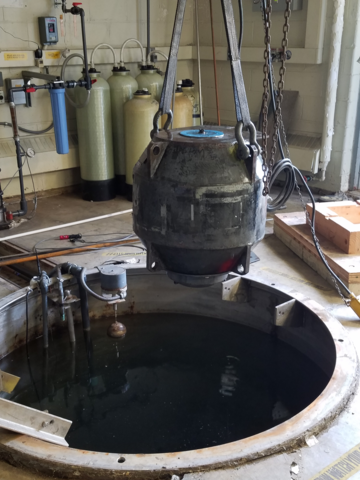Cobalt-60 Pool Source
In 1965, on the newly built Gaithersburg, Maryland, campus of the National Bureau of Standards (NBS, now the National Institute of Standards and Technology, or NIST), a cobalt-60 “pool source” was installed in a special annex to Building 245 known as the F wing. For more than 50 years, the intense radioactivity of the source provided a national calibration facility for high-dose industrial radiation dosimetry, the measurement of radiation exposure.

High-dose radiation sources come into play when sterilizing food and medical equipment, measuring the durability of electronic equipment in high-radiation environments such as outer space, and in measuring the biological effects of high doses of radiation. Multiple cobalt-60 sources are available for use at NIST, but the pool source, when it was installed, was one of the most intense, well-calibrated facilities in the U.S.

Cobalt-60 has a half-life of 5.26 years; thus, the initially intense source decayed over 10 half-lives until it no longer provided a useful dose rate compared with the other sources available to the Dosimetry Group. It was decommissioned in 2018.


